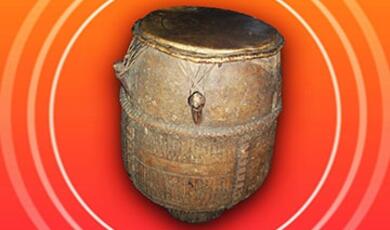Progresses: Royal Courts on the Move in Tudor and Stuart England
Share
- Details
- Text
- Audio
- Downloads
- Extra Reading
Most summers Tudor and Stuart monarchs took their court on an extended progress round the home counties staying at their own palaces and the houses of their courtiers. The cost and impact of hundreds of people, their horses and servants, was considerable; for the aristocratic hosts a royal visit was a momentous event.
This lecture draws on new research to reveal who they benefited, their impact on the economy, the landscape and on architectural ambition.
Download Text
Progresses: Royal Courts on the Move in Tudor and Stuart England
Professor Simon Thurley CBE
14th September 2022
In February 1593 Queen Elizabeth I was in her new gallery at Windsor Castle and couldn't decide what to do. Should she move from the castle or not? One of the Earl of Essex’s men, Anthony Standen, described the chaotic scene caused by the royal indecision as relayed to him by one of the carters who was loading up the Wardrobe carts with the royal baggage:
‘Three times he had been at Windsor with his cart to take away, upon orders of a remove, some part of the stuff of her majesty’s wardrobe; and when he had attended once, twice and the third time, [and heard] that the she would not move, clapping his hand to his thigh said these words ‘Now I see’ said the carter, ‘that the queen is a woman as well as my wife’. Which words being overheard by her majesty, who then stood at a window, she said, ‘what villain is this’ and so sent him three angels [gold coins] to stop his mouth’.
The fact is that Queen Elizabeth I was always on the move and so, in fact, were all the Tudor and Stuart monarchs. Today we have a faint echo of this royal restlessness in the annual round of movements of our queen, oscillating between Buckingham Palace and Windsor during Parliamentary sessions, but moving to Sandringham at Christmas, and Holyroodhouse and Balmoral in the summer.
In fact, since the early Middle Ages the royal year has been made up of a series of stays of varying lengths at royal houses and the residences of the monarch’s subjects. In the winter the court stayed in the Thames valley close to Westminster and then in summer travelled extensively across the country. The summer expeditions were normally called progresses to distinguish them from the itinerant movements of the wintertime court. This was partially dictated by weather and the condition of the roads which made it impossible to travel long distances in winter. But other powerful factors were at work too.
First amongst these was the need for the monarch to observe his subjects and be seen by them, where necessary quelling disturbance and disloyalty dispensing justice, granting favours and showing pleasure or displeasure. Then were the great religious feasts of the year - Christmas and Easter, of course, but many others; monarchs needed to stage these in places which could cope with the full weight of liturgy and display that accompanied them. There were also administrative functions that monarchs needed to perform, and these often had to be undertaken in particular locations. Finally, there was pleasure. Almost all the king’s country seats were located in or near royal forests where the king could hunt deer. Hunting was the principal recreation of the monarchy and aristocracy, and, in the saddle, the sovereign not only enjoyed himself but created a bond with his companions.
During the winter, when the court was itinerant, it could move at short notice between the large houses in the Thames valley. They were normally referred to as the standing houses as they remained fully furnished and ready to receive the court at short notice. On the other hand, the summer progress was a formal event that required considerable planning. Each year the king’s ministers would sit down and devise a route that combined excellent hunting with visits to people and places that the king needed to see.
It was a skillful job because as well as being alive to the prevailing political context, the compilers had to know the conditions of the roads, the distances between houses and the king’s likes and dislikes. The route, known as the ‘giests’ (pronounced guests), was then shown to the king for his approval. Once resolved the Office of Works would be informed and the king’s Surveyor of Works (chief architect) would ride the route to inspect the houses that the court intended to visit.
By the Tudor period the court on summer progress was perhaps only half the size of the wintertime court, but it still numbered 6-800 people. It is hard to find a modern equivalent of the Tudor progress but some years ago explaining how Tudor progresses worked to the late David Bowie, he told me that it sounded just like a rock band on tour, – a self-contained mass of people moving from place to place with its own self-contained infrastructure. In the sixteenth century simply moving so many around the countryside was a huge task. The king and his family had the royal stables containing perhaps 300 horses while aristocrats, churchmen and ministers following the progress would have their own. Most people rode, but the very young or infirm might be carried in a horse litter.
The vast Lord Steward’s department, that looked after the domestic needs of the court, did not have its own transport and so towns and villages through which the court passed were required to supply horses and carts at a fixed rate – generally 2d a mile: this was very unpopular as the commercial rate was around 12d a mile and, at harvest time, when the court was most mobile, owners needed their carts themselves.
In the late 1520s when the Court moved through west Kent sixteen villages were required to supply 26 carts for summer progresses within the county. This was a fraction of the number needed; in 1589 169 carts were needed to move Elizabeth I. The wardrobe of the beds required ten, the jewel coffers 13 and the chapel ten. Various other household departments had their own carts, the yeomen of the guard had one to transport their uniforms and the masters of the king’s hounds had carts for the dogs.
The richest aristocrats moved their own furniture, bedding and tapestries on progress in their own or hired carts so, in all, the total number of carts on progress might be 300-350. The Tudor and early Stuart court on the move must have been an impressive sight moving through the lanes and byways of England, but it was very slow averaging only 12 miles a day, though on some, more often travelled, routes it might make as much as 18.
As well as transport careful provision had to be made for the supply of the royal kitchens. Feeding some seven hundred people required careful planning. The royal clerk of the market had to ride ahead of the progress to ensure that there was enough bread, beer and meat for the court. This, like cart-taking, was unpopular because the royal purveyors (responsible for buying food for the court) were entitled to buy goods at something known as the king’s price. Inevitably this was cheaper than the price everyone else had to pay and so the arrival of the court did not mean profits for local producers. In the 1520s the fixed price the court paid for poultry, for instance, was 5s per swan, 2s for a peacock, 7d for a hen and 6d for a dozen larks. This discount did not apply to courtiers or churchmen who put the king up, so the honour of a royal visit was accompanied by a hefty bill. When the court arrived at Wolfhall to visit Sir Edward Seymour in 1539 he had to convert a barn on his estate for his household servants. On the first night he gave supper for seventy, but this was a prelude to the dinner for eight hundred the following night and fifteen hundred guests on the next two nights.
Also in the advance guard was the gentleman harbinger. He had an extremely important role because few houses at progress time could accommodate the whole court and people had to be put up in subsidiary royal houses, in the houses of the gentry or even in inns. The harbinger would allocate everyone in the household a set number of rooms and stables for their horses. A chit or billet was issued to each person allocated space and this would be presented at court or in peripheral accommodation nearby. The harbinger was in a powerful position as courtiers vied with each other for the best places to stay. Although Wolsey tried to crack down on courtiers bribing the harbingers for the most comfortable beds, he was not free from it himself. On one occasion in 1520 we know that he offered 20s if the harbingers could put him in the best lodgings in Canterbury, Sandwich and Dover.
So, let’s now turn to look at the whole Tudor and Stuart period from the accession of Henry VII and ask how did their annual itineraries compare and what impact did this have on the country at large?
Apart from a couple of hours spent at Westminster Palace as a teenager in 1470, when he became king, Henry VII had never been in an English royal palace let alone lived in one. His schooling in the ways of the English monarchy was at the hands of his wife and mother, veterans of the court and palaces.
His court, like that of his predecessors, was peripatetic and in the fifteen years up to 1500 Henry probably moved location around a thousand times. His most favoured place was Westminster, easily, and his average length of stay there was longer than anywhere else. Although there were lots of short stays in the winter he could be in residence for a month before he had to move on to allow the palace to be cleaned. Then came Richmond where he would stay on average for around ten days, rarely for longer. Third was Greenwich and fourth was Windsor. These residences formed the spine of his existence.
Outside London Henry VII owned perhaps as many as eighteen other residences. The largest and most splendid of which, like Woodstock, and Kenilworth would be visited regularly, perhaps ten times in fifteen years, staying for a total of 100-120 nights in each. Other royal houses like Nottingham or Pontefract might only be visited a handful of times for a few nights. Most of the summer progress was made up of visits to the houses of courtiers, bishops and abbots. This pattern of royal movements hardly changed in the early years of Henry VIII despite the acquisition of a small number of new houses, such as New Hall in Essex. Like his father, much of his itinerary was reliant on houses owned by bishops and abbots.
After 1530 the king’s itinerary was radically re-drawn because of the acquisition of Wolsey's former houses, especially York Place and Hampton Court but also, gradually, of most of the monastic houses that he had used before the dissolution. This meant that while, before 1530, around 65% of the moves Henry VIII made were to houses he owned, after 1530, the figure was 91%
So here is an example of one of Henry VIII’s Progresses. This is the progress of 1526 starting at Windsor Castle and proceeding through Sussex, Hampshire, Wiltshire, Berkshire, Buckinghamshire and Bedfordshire in all a perambulation of over 300 miles. He stayed at a mixture of royal houses, houses of ecclesiastics and those of courtiers. As the reign went on the King bought and built an extraordinary number of new residences and so was more and more often able to stay in his own houses - by the 1540s 90% of the time.
The annual round of Elizabeth’s life was not materially different from her father’s. During the winter months the court was itinerant oscillating between the standing houses in the Thames valley, although unlike her father, who travelled mainly by barge, she travelled by coach between them. Whitehall was her most popular residence followed, in order, by Greenwich, Richmond and Hampton Court.
On twenty-three summers the queen made a progress, these, like her father’s, typically started in July and ended in late September lasting around fifty days. Her travels took her as far west as Bristol, east to Norwich, and as far north as Staffordshire. Yet most of her time was spent in the south, and in half of her progresses, she barely moved out of a fifty-mile radius of London.
Much of this was the case with Henry VIII, but the key difference was that after 1530 Henry, on progress, stayed in his own houses most of the time; in contrast Elizabeth preferred to stay with her courtiers - around 80 per cent of nights on progress she was somebody’s guest. So, for example, in 1561 the royal progress into Essex, Suffolk and Hertfordshire lasted sixty-eight days during which Elizabeth visited eighteen private houses, two towns but only stayed at four royal houses. Although there was a hard core of Privy Councillors with whom she stayed regularly in all some 420 of her subjects had their monarch to stay for a night or more over the reign. Here is Queen Elizabeth I’s progress of 1575, one of her most ambitious summer progresses lasting some 139 days with 44 overnight locations.
The Queen was a notoriously fussy guest. Visiting Lord Burghley at Theobalds the queen complained that a room prepared for her was not large enough and he had to enlarge it and have repainted the elaborate mural of oak trees and coats of arms that had just been finished. On a visit to Sir Thomas Gresham at his house at Osterley during 1576 Elizabeth commented that a courtyard they were passing ‘would appear more handsome if divided by a wall in the middle’, The super-rich Gresham, founder of course of our college, ordered that a wall be erected overnight and so, when the queen rose the next morning, her suggestion had become a reality, one wit observing that ‘any house is easier divided than united’
In 1603 when James VI of Scotland came to the throne Sir Robert Cecil, with Henry Howard and his nephew Thomas, Lord Howard hoped that they could simply substitute one monarch for another, and everything would carry on more-or-less as before. But James was thirty-seven and had been a king all his life. It was far too late to change the way he was. He was a profoundly different sort of monarch to his predecessor. The magisterial dignity of Elizabeth, built on an obsessively cultivated mystique, and expressed in magnificent surroundings and pervasive panegyric, had no attraction for James. His style was homely, informal, anti-urban and private, a way of life developed in his long years in Scotland.
This had a huge impact on the king's itinerary. I have spoken about James I’s preferences in my lecture entitled Inigo Jones and the Architecture of necessity, but to recap: In 1605, in a letter specifying the requirements for a new hunting lodge at Ampthill in Bedfordshire, James I drew a distinction between palaces of necessity, where he was accompanied only by those who were necessary for his immediate needs, and palaces of state where the full court would attend.
This distinction between state and necessity existed informally under Henry VIII, who would visit smaller houses for hunting and pleasure with his riding household. Such an arrangement did not appeal to Elizabeth, but James I revived it both architecturally and institutionally. His new houses built at Royston, Newmarket and Thetford were houses of necessity while Whitehall, Hampton Court and Theobalds were houses of state for pomp and gravity. Royston and Newmarket were a new kind of royal residence. Here James would stay for long periods transacting state affairs as necessary; but there was no state ceremonial, they revolved round the informality of royal life.
Here is an example of one of James’s progresses, this is 1612 when he went as far north as Nottinghamshire. Most of his overnight stays were with courtiers, only five houses were royal property.
While James I loathed London, Charles I found it magnetic. Whitehall was by far and away his most favoured, and frequently visited, residence. In contrast to his father Charles would move to Whitehall whenever he had the opportunity and the winter court season was extended at both ends to become a four or (in the 1630s), a five-month, continuous residence. Like his father, during the summer months, he was only there for business but then, most of the aristocracy and the whole of fashionable society were in the country.
Charles made a summer progress every year of his reign up to 1640. Since 1603, of course, the pattern of Stuart itinerance was Britain not just England. Yet his itinerary was more restricted and conservative than James I's, visiting a relatively small number of places on multiple occasions, and these mostly close to London. It was again hunting that drove his summer's activities and took him to both his own parks and those of his courtiers.
The logistics of the Caroline progress were no less formidable than those of the Tudors: the king travelled with some 400 carts, guarded by 100 Yeomen of the guard and accompanied by more than 1,000 household officers from kitchen scullions to the noblest aristocrats. On an average two-month progress there would be ten to fifteen moves, and on the two extended progresses to Scotland in 1633 and 1639, there were three times that many.
Protector Cromwell was entirely London focussed and after the execution of Charles I in 1649 all the provincial royal palaces and hunting grounds were disposed of. Outside London Cromwell only kept Hampton Court as a weekend retreat and Windsor as a garrison headquarters and these two were the only palaces in an even vaguely usable state in 1660. But, in the first five years of the Restoration this didn't matter, as Charles II barely left Whitehall. In fact, his was the longest more-or-less continuous stay at Whitehall of any monarch ever between 1660 and 1665.
What changed things was the plague. In June 1665 there was a general remove to Hampton Court and, from then on until February 1666, the court was on the hoof, strategically relocating to avoid infection. The seven months that Charles spent on the road highlighted the fact that, other than Hampton Court and Windsor, the crown no longer had any habitable domestic residences outside London. The following spring, determined to rectify this, Charles made a trip eastward to Saffron Walden and purchased Audley End, a house that had been designed from the first to host royalty, with matching king's and queen's sides round an inner court.
Like many a spur-of-the-moment purchase Audley End did not live up to reality. The court visited a handful of times, and not at all towards the end of the reign. In the end, like his grandfather, he bought a site in nearby Newmarket on which he built a new house. Unlike its predecessor, that had deliberately been a house of necessity, Charles's new house had much greater architectural presence and even some modest grandeur.
In the late 1660s Charles II essentially began recreating the historic pattern of residence enjoyed before the Civil war. However, in the 1670s he began to re-draw the royal itinerary, this radical re-thinking of royal habitation was triggered by the exclusion crisis. In 1673, after the passing of the Test Act, and the acknowledgement of the Duke of York's Catholic conversion, Charles decided to move the court out of London, which was wracked with political tension and unrest. They went to Windsor where the king resolved to make the castle his usual summer residence, commissioning Hugh May to undertake a thoroughgoing modernisation. Completed for the summer of 1678, the New Windsor was a residence entirely devoted to pleasure – when the council met, it did so at Hampton Court, there was no council chamber at Windsor.
But although the medieval curtain walls of Windsor kept the court secure from the disorder of London rocked by the Popish Plot, it could not replace Whitehall. The political turmoil of the three exclusion parliaments, culminating in its meeting in Oxford, convinced Charles to move the court even further from the capital and it settled, in 1682, in Winchester.
There he ordered Sir Christopher Wren to build a vast new residence, not just a hunting lodge, but a fully equipped royal palace. It was the first entirely new royal palace built since the time of Henry VIII. The king's death and James II's disinclination to finish the palace robbed history of the opportunity to understand how it would have changed the royal itinerary, and possibly re-mapped the political geography of England. Winchester was potentially an alternative capital, with the new palace invested with the history and infrastructure necessary for rule.
James II was entirely focussed on Whitehall as the base for his crusade to bring about the re-conversion of England to Roman Catholicism. But his daughter, Mary, and her Dutch Husband, William, came to the throne, like James I, with firmly developed personal tastes and preferences. Arriving in London, William disliked Whitehall, and was eager get out to the countryside as quickly as possible, and orders were given for the court to remove from Whitehall to Hampton Court.
The decision was met with horror. Keeping the court out of London was bad for the city's economy and dreadful for the sanity of his ministers, all of whom lived in or near Westminster. So, the king was persuaded to look for somewhere closer to Whitehall and quickly settled on the second Earl of Nottingham's house in Kensington. Just a month after their coronation the Office of Works was busy rebuilding two royal houses for the joint monarchs.
It was in this way that King William, in a matter of months of his accession, again redrew the pattern of royal habitation. Whitehall was now to be principally the centre of the national bureaucracy, while Kensington was to be William and Mary's normal town residence, and Hampton Court the palace of state. This arrangement replicated their pattern of existence in Dutch Republic and was also an arrangement much more like that of James I than that of Elizabeth I or Charles II.
The new pattern, like James I's, might have been a very personal and temporary recasting of royal movements if it had not been for the fact that in 1698 a massive fire destroyed the state apartments at Whitehall leaving the central offices of state camping in its surviving remains in St James's Park.
The loss of Whitehall as the architectural and geographical nexus between monarch, court and ministers must have been felt by Queen Anne, who had seen first-hand how Charles II had bound the sinews of state together in the chambers and galleries of the great palace. But there was no way that she could afford to rebuild it. Anne used Hampton Court and Windsor as her country retreats and in London she preferred the newer and more private metropolitan palace at Kensington to the official seat of power at St James’s. In short, St James’s and Hampton Court were for business, Kensington and Windsor for pleasure.
So just over a century of court life between 1485 and 1714 saw a variety of personal preferences, and a range of pragmatic solutions to practical and political problems, each of which affected the royal itinerary. Although Charles II went on few formal progresses, and William III on only one, the late Stuart monarchs were still highly mobile rarely remaining in one location longer than a few weeks.
I now want to turn to my main question: what can we learnt from all this, what are some of the issues that that need to be confronted in understanding the court on the move? The first must be the economic impact. Contemporaries were keen to complain about royal presence in their vicinity, Elizabeth, who spent more than 40% of the nights in her reign in Surrey, received a complaint from its residents that though it was the
‘Least and most barren’ of counties ‘it is it is charged with continual removes and carriage of coals, wood and other provisions to the court… also by my lord treasurer for the repair of her majesties houses’.
In the following reign the residents of Royston tied a note to the neck of one of James I’s hunting dogs saying, 'please his majesty to go back to London, for else the country will be undone; all our provision is spent already, and we are not able to entertain him any longer’. James got the message but had little sympathy with the population of Royston.
It is certainly true that royal prerogatives of cart-taking, purveyance, and the activities of the harbingers that I explained earlier could be vexatious and costly, yet the score card was not so one sided: The Corporation of Winchester bribed Charles II to come to their city and build his palace with lavish gifts of land, materials and plate, much to the dismay of the people of Newmarket who lost the economic benefits of the court staying. In the 1640s there was despair amongst the luxury trades in Westminster as the court left London.
It has been estimated that the expenditure of the court increased by £1,000 during progress time. Benefits to craftsmen and shopkeepers are worth more detailed interrogation. The innkeepers, blacksmiths and brewers were major beneficiaries, as were suppliers of luxury goods, firewood and fodder. We don’t currently have the detailed data, but we do know that towns like Kingston Upon Thames benefited hugely from the presence of the court nearby.
More attention has been given to the political implications of itinerancy - The court didn't travel alone, and the huge entourage frequently contained many of the Privy Council, various administrators and the occasional ambassador. The overlapping itineraries of royal ministers has been studied for Henry VIII's reign but not for later reigns and is crucial to the anatomy of power and the aristocratic geography of England. The earl of Arlington built his country house at Euston to be close to Charles II at Newmarket. A few years later leading aristocrats bought and built town houses in Windsor. Town house purchases and Country House building both in location and format were profoundly influenced by the royal itinerary.
Government continued with the court on the move and instructions had to be issued leading to the development of the post system between the king and Whitehall and between Whitehall and the south coast and Scotland. For Charles I progress in 1636, 150 horses were requisitioned for the royal messengers alone. This is one example of how, in considering the development of departments of state and administration, the peripatetic nature of the executive is an important force.
The landscape legacy of royal movements is enormous. The infrastructure for hunting was immense: embarkment still defines much of the countryside today. Hare warrens at Royston and Newmarket kept royal coursing supplied and rabbit warrens supplied royal tables. Restrictions on local people were fiercely policed and those living round Royston were told to flatten their plough furrows to make it easier for the royal horses.
During Elizabeth’s reign there was a revolution in royal transport with the widespread introduction of carriages which led to a drastic improvement in the road network round London and soon further afield, Winchester was only attractive for Charles II because of the good roads leading there and excellent stabling in the city. Regular royal routes created arteries of rapid travel for others creating corridors of access and economic opportunity. A town like Guildford, a royal centre, and a staging post to Portsmouth, benefited enormously from the frequent passage of the court.
The hundreds of carts required by the court on the move were initially pulled by oxen but when replaced by horse there was a huge strain put on equine infrastructure, the studs and agriculture. On Edward VI first and only progress half his entourage had to be sent home after the first week because there was not enough fodder to sustain the thousand horse he had brought with him.
Obviously, construction projects also had a huge impact, especially during periods of new build. We know quite a bit about the development of the brick and tile trade in Surrey, but the development of domestic glass manufacture and lead production both crucial after the 1580s were stimulated by royal building and fashions. Certain towns flourished due to the building trades the growth of Reigate, for instance, owed much to the stone quarries so essential to the construction of the royal houses.
Neither progress time or itinerancy was exclusively rural, and the mobile court had a big impact on towns. The progress of 1634 included a visit to Leicester. The town gates were repainted, householders were required to paint the outside of their houses and pave the streets in front. the roads were laid with sand and gravel and the streets were strewn with rushes. New liveries were made for the mayor and aldermen and golden bowls with pictures of the king and queen were fashioned as gifts. The Earl of Huntingdon, the Lord Lieutenant, was sent ahead to ensure that St. Martin's Church was properly arranged for the Sunday when the king would attend divine service. Impacts both short-lived and more sustained were stimulated by royal visits.
All this is to say that the consequences of the monarch and court moving round the country had important, deep-seated and long-lasting implications. If we were to create a huge pair of scales and place on one side the benefits of the peripatetic court and in the other side the disbenefits I think we would find that, on the whole, the presence of the court stimulated trade, encouraged economic activity, and brought money into the provinces. The summer progress was a sort of early modern levelling up bringing the money that stuck to the court out of London and spreading it around the home counties. Yes, there were vexations and irritations, but in aggregate I think the court on the move was a positives force and one that can still be seen in the countryside today.
Nex time you are in Chelsea and walk down the King’s Road remember that you are enjoying a private road built so that kings and queens could get to their houses in the west quickly – a concrete and surviving legacy of the British court on the move.
© Professor Thurley 2022
This event was on Wed, 14 Sep 2022
Support Gresham
Gresham College has offered an outstanding education to the public free of charge for over 400 years. Today, Gresham College plays an important role in fostering a love of learning and a greater understanding of ourselves and the world around us. Your donation will help to widen our reach and to broaden our audience, allowing more people to benefit from a high-quality education from some of the brightest minds.


 Login
Login







